
Cinesite, Method LA and Cantina Creative populated Iron Man Tony Stark’s new world with photoreal environments and bold visual effects.
Part 2 seeIron Man 3 part 1
IRON MAN 3: Brave New World |
|
Method LA was called on to work on ‘Iron Man 3’ quite late into production, starting work in January 2013 and delivering by mid-March. It wasn’t much time for their initial commission of 125 shots, of which just over 80 can be seen in the final film. VFX supervisor Matt Dessero and the team therefore planned to work very accurately to avoid losing time on errors. Iron PatriotThey were working with assets from three different vendors – Framestore, Weta and Digital Domain, who supplied models of the Iron Patriot suit. Because their shots included those of the suit opening, Method needed to build extra internal parts for the suit, create more detailed texturing and break up the model. |
 |
|
Making sure the Iron Patriot felt heavy was production VFX supervisor Chris Townsend’s primary concern. He never wanted the suit to feel flimsy. This weight was achieved mainly through the animation, such as adding reverberation as each large piece opened and stiffening the joints to limit arm and leg sway. Once the primary animation was approved, they scored the suit further, and added more movable geometry to the interior and exterior to increase the complexity of the suit opening effect. |
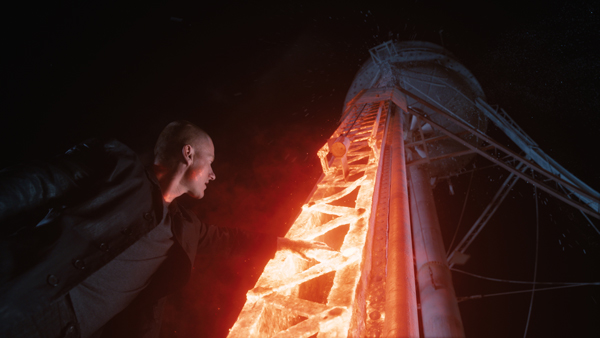 |
|
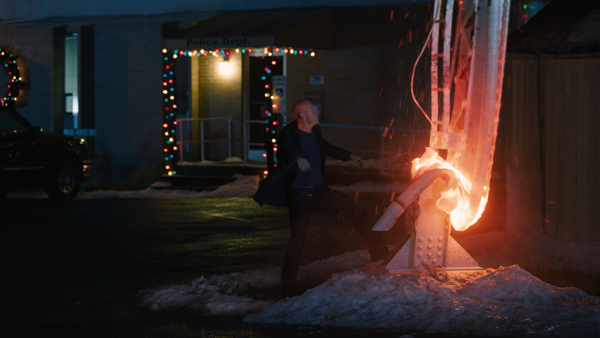 |
|
Blend Shapes vs Simulations“As the modellers wrapped the main water tower asset comprising the tank and legs, we began adding rips, tears, and creases into the tank, being careful not to flatten it. Once the primary level of destruction had been approved, secondary levels were added in the form of panel separation, bent edges and smaller creases, and tertiary animation with snapping tension cables and falling debris. Another modeller was responsible for the girders, twisting the legs based on reference imagery. As the animators picked up the models and the shots started to take shape, we would request further articulation of specific pieces improving the shots every day.” |
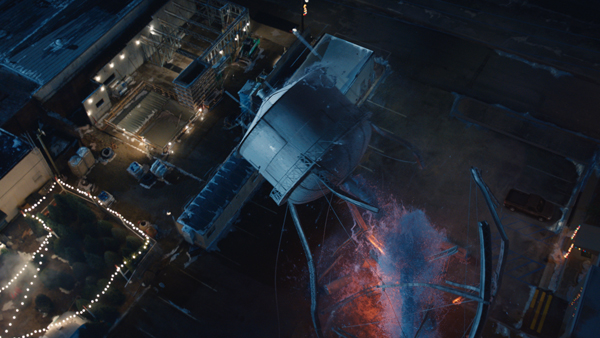 |
|
Finally arriving at their full CG hero shot brought the challenge of creating water flowing from the cracked tank and under the camera. Detail was added to the water in the form of whitewash foam and aeration, particulate mist, fine volume mist, spurts and splashes. The water interacts with all objects in the environment and causes pallets to shift. Fine ice crystals blowing in the air were added, with snow clumps falling from the collapsed water tower as the tank comes to rest. Hot glowing embers rise from the heated girder in the distance. Nuke was used for compositing. |
 |
|
 |
|
Plant RegenerationAn interesting animated look that Method was assigned to develop was the rejuvenating effect that the drug Extremis has on a damaged plant. They started with concept paintings made by Method’s concept artist Olivier Pron to show how hot, travelling streams of extremis, referenced from production, rapidly regenerate the plant. The drug starts at the core of the plant and flows up the stem via its internal fibres and into the wounded nub. The plant regenerates when the fibres begin to melt and form a lava-like goo. From under this goo, new growth is formed as the plant cools and ash is brushed away as the new growth emerges. |
 |
|
|
Cinesite Powers UpThe final battle in ‘Iron Man 3’ brings together the heroes and villains at night at a floodlit, abandoned marina. This was the primary sequence Marvel approached Cinesite to work on. “We came onto the production just nine weeks before delivery, which is an unusual situation for our team,” said VFX supervisor Simon Stanley-Clamp. “We had no pre-production background or on-set planning to guide us. The sequence had grown to the extent that the original vendor assigned to it, Weta, still had a number of shots and tasks to complete at that stage. We mainly took care of the sequence opener, as the characters arrive, up to when the shooting starts. All up, between this sequence and some other work, we delivered about 100 shots, nearly all of which remain in the final cut.” To get quickly up to speed, Simon chose a team he knew well from other projects and kept their approach straightforward. Avoiding any undue technical experimentation, they stuck with what they knew they were good at, using RenderMan for all renders. If their effects library – which is extensive in terms of explosions, smoke and spark elements - already held a suitable FX pass they would use it instead of starting from scratch. They lacked even the luxury of two or three days in R&D. Marina Environment“The marina environment came to us direct from Weta, who by then had spent several months building up the assets. They handed over the highly detailed models along with their textures, which was a bonus because we could be assured of maintaining scale and looks. We had a LIDAR scan of the marina set to help during layout, plus a couple of live action plates to match to for the topography. Then, about three to four weeks into our work we received some finals from Weta as well, for a clear idea of the overall look and grade. Fortunately, the Iron Man films have a very identifiable look latch into, such as colour scheme.” |
 |
|
Re-purposing and Asset SharingFor a handful of shots as the gun battle gained momentum, they could re-purpose the live action by nesting it back down into the CG environment, and then on others they did the reverse of that, placing elements back behind the shot plates. In short, the plates were not always intended to exist in the edit as they were captured. They might be reduced, flipped or pulled apart. “These are all standard enough compositing tasks if the team has been on the project from the start. You develop a feeling for composition and how elements should be used. But coming in later on meant some extra layout experimentation,” Simon said. All communications from production VFX supervisor Chris Townsend came to them via Cinesync conference calls, even the initial brief. There was simply no chance for a face-to-face-meeting. As they got going they were participating in a conference call every day. Simon, amazed at how efficient the production was at handling the work remotely, said, “In total I believe they were working with about 17 or 18 vendors, more than I had artists on my team. Yet the film holds together and never falls into a mosaic of the different teams’ styles. |
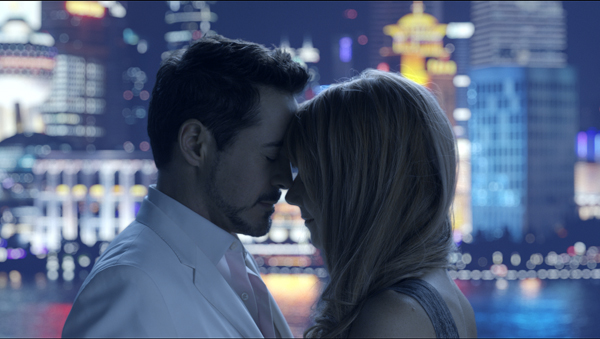 |
|
“At the beginning we had to write a few scripts to convert the file structures and naming, and handle renumbering of textures and assets to something that we could use in our pipeline. However because everything was well packaged up from Weta it became an automatic process by the end, with few manual tweaks. We were also given approved look development turntables, which helped to match our shading and lighting to. Further to that, the shots fortunately didn’t involve rigs or characters to work with, only geometry and architecture.” Dramatic LightsThe scene is dramatically lit with floodlights that often shine through clouds of smoke and a moist atmosphere. Cinesite put this to their advantage when lighting their work to match this, placing their own smoke elements and atmospheric elements on cards in Nuke and shining digital light through them to give an impression of the path of the follow spots. |
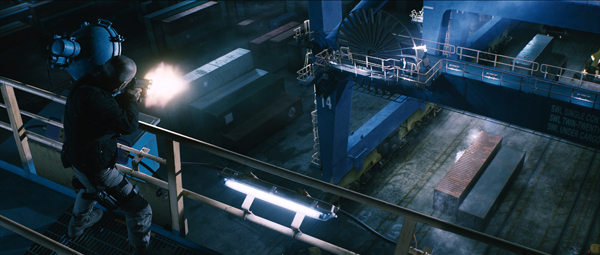 |
|
The distant environment and lights came from their matte painting department who produced a massive, oversized digital matte painting based on a practical marina. It was used very subtly, placed into the far distance and shown well out of focus. Stark IndustriesApart from this big marina sequence the team also completed a wide overhead establishing shot of the Stark Industries complex. A helicopter plate had been captured of a university campus, which Chris Townsend wanted to look more like an industrial science park. They vegetated the surrounding area, removed some of the roads and then built up the park with foliage and trees. The environment department re-purposed some buildings in the plate by either re-positioning them or placing them on cards to accommodate a camera move. The helipad was built on top of the existing architecture. The grass was matte painted down and the trees were created with Speed Tree software to match the existing foliage, ‘growing’ additional trees to drop in. |
 |
|
Further shots the team completed included several green screen composites for the in-car shots, all at night using extra reflections on the windows and grading with interactive lights flashing across the faces. Also, the villain Savin’s head, seen closely shaved in the movie, had to be reconstructed following a re-shoot that was completed after the actor had grown his hair back. They had a CyberScan and texture passes of the character, but did not need to resort to 3D methodology for the clean up, achieving the rebuild completely in 2D. www.cinesite.com 3D Holographic HUDsCantina Creative also completed over one hundred 2D and 3D visual effects shots that appear throughout the film. Cantina Creative designed the 3D heads up displays as a virtual graphical interface that Iron Man sees from inside the helmet environment of his armoured suits to receive updated data on his physical condition, weapon and navigational diagnostics and other vital statistics. Their emphasis was on Stark Industries’ most advanced Mark 42 suit, new for ‘Iron Man 3’. |
 |
|
Cantina Creative has previously designed HUD and interface graphics for other Marvel superhero films including ‘Iron Man 2’ and ‘The Avengers’. Due to the engineering advances in these new suits, including Tony’s ability to access them via remote control, the VFX team had to further evolve their designs and graphics to augment Stark’s identity and performance accordingly. The need to deliver shots in 3D stereo added other demands. “Chris Townsend’s creative input included using a more 3D photo-real, holographic approach as opposed to the way we had worked on the previous films, relying on 2D graphic elements in 3D space. The new designs took advantage of the beauty of the volumetric lights projected into space using optical flares, a design motif drawn from the ‘External HUD’ hologram in the movie, and the textured reflections generated by the light interaction of the HUD widgets from the ambient environment. This meant we weren’t limited to creating graphics that only worked in a text-functional manner but could give them an organic, holographic look,” said Cantina’s VFX Supervisor Venti Hristova. |
 |
|
Manipulating POV“Marvel provided us with VFX plates of Robert Downey Jr’s performance as Iron Man in the suit,” Creative Director Stephen Lawes explained. “His head movements were motion tracked to help define the motion and action beat needed in each sequence and then composited into all our graphics sequences so that we could mirror these moves as accurately as possible. |
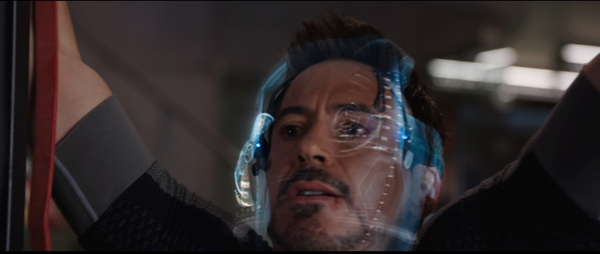 |
|
For Venti Hristova, one of the team’s major challenges was the initial Mark 42 boot up sequence. “Many of the elements, including a miniature version of the suit and the holographic helmet were generated and rendered from CINEMA 4D. These graphics had true 3D depth which heightened the stereo viewing experience as well as the interactive light qualities, making them both photo-real and immersive.” www.cantinacreative.com |
|
Words: Adriene Hurst |


















